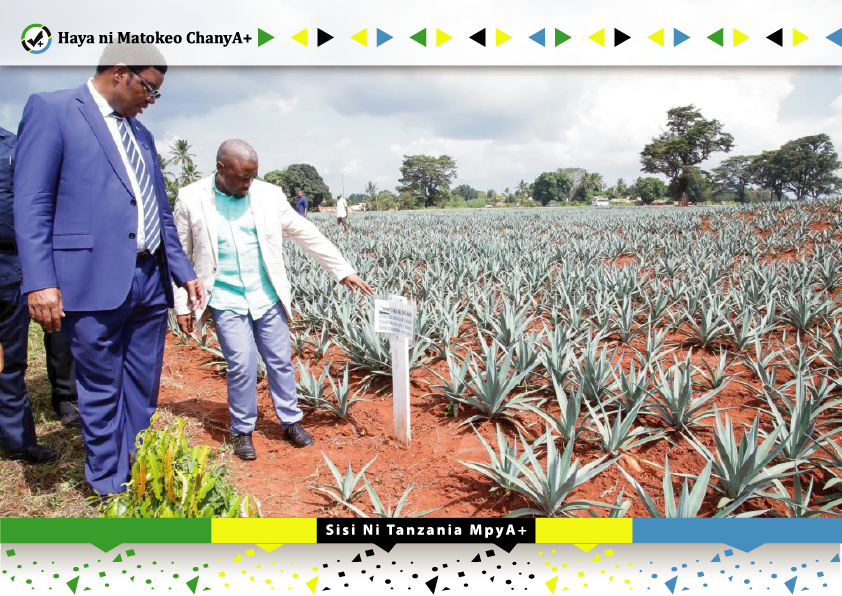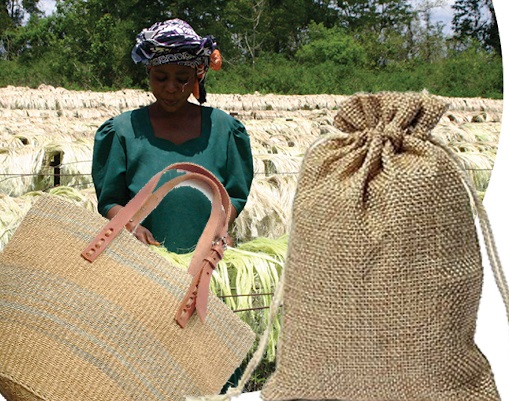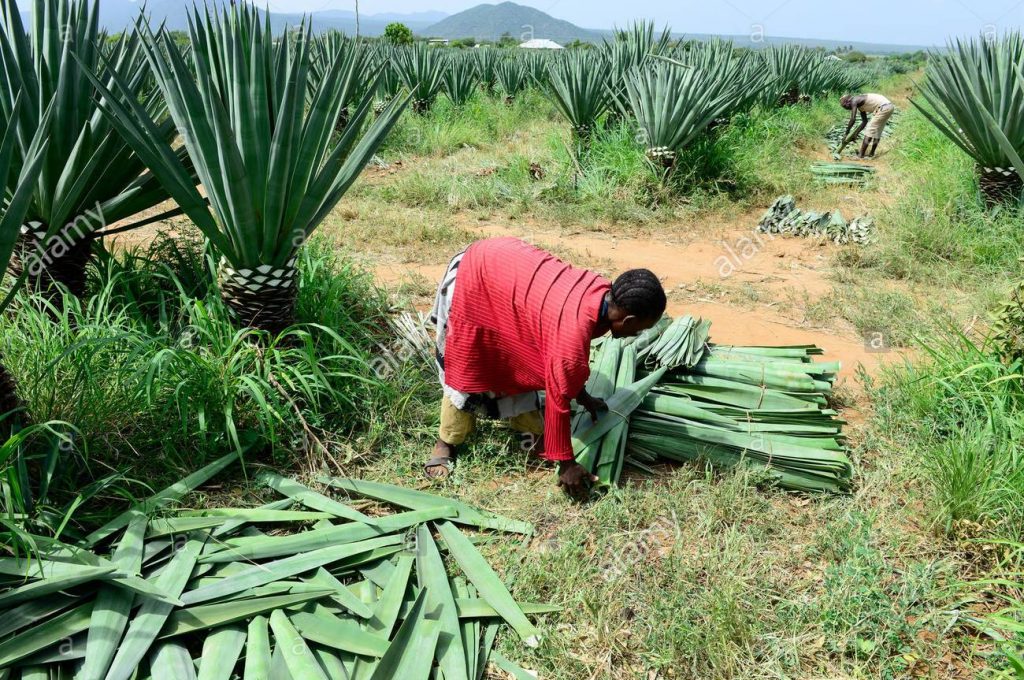Other farmers encouraged to take up virgin land where the crop grows and start planting….

By TZ Business News Staff and Agencies.
The Tanzania Government has said it is serious on its resolve to revive all sisal plantations around the country through the private sector, a complete U-turn on the socialism-era mistake to nationalize private farms and other property.
“We are going to give back all sisal farmers properties back to the rightful owners,” Tanzania Prime Minister Kassim Majaliwa said in Tanga region in early June, 2020. “Nobody is going to be oppressed.”
The Prime Minister made the announcement in Tanga where he had traveled to inaugurate Tanzania Sisal Board (TSB) offices and to inspect a sisal research station located there. Return of sisal plantations back to original owners is to certainly correct the socialism-era mistake in which private property was nationalized to result in serious mismanagement and eventual decline of the crop.
The Government, under the leadership of Dr. John Pombe Magufuli, is seriously committed to revive sisal plantations in the country, the Prime minister said. He also encouraged farmers to take up virgin land for planting the cash crop where it grows.
A TSB market outlook indicates there is good money to be made in this crop at the moment.

Traditionally, Tanzania’s sisal products had been exported to the European Union (EU), the Russian Federation, the former Yugoslavia, Japan, India, China and Pakistan and later to Saudi Arabia, Iraq and Iran. The Indication is that now the market will expand to include china, nigeria, saudi arabia, spain, india, germany, japan, kenya, Libya uganda, morroco, Ivory cost, Zimbabwe and Egypt.
Increased utilization of sisal in construction has made the Near East the second largest user of sisal fibre in the world today. In the Far East, particularly China, imports of sisal fibre have grown significantly in recent years, according to the United Nations Food and Agricultural Organization (FAO).
The fiber is used to produce twine, cordage for hay, packaging, baling, building and many other uses including carpets, wall covering, doormats, car mats, buffing cloth used for polishing of metal and furniture, fine yarn, bag cloth, padding, mattresses and handicrafts. The majority of this fibre is utilized more in the new products, such as industrial polishing cloth and composites.
New products developed from the sisal plant include pulp and paper mainly for making boxes for packaging.
In Tanzania the main product derived from sisal is fibre. However, the extracted fiber constitutes only 2% of the sisal plant, while the other 98% is regarded as waste. FAO says studies have shown sisal waste is more valuable than the fibre.
Sisal waste produces biogas used in engine-generator sets to produce electricity while the by-product from the biogas plant is environment friendly organic fertilizer. Sisal waste can also be used directly as animal feed.
Sisal was brought into this country by German colonists in 1893, when the German Agronomist Dr. Richard Hindorf smuggled the plant Agave sisalana (sisal) into Tanganyika, now Tanzania.. from Yucatán, Mexico. Records say only 66 of the smuggled plants survived the long journey from Mexico.
In 1964, before nationalizations, sisal was grown in the regions of Tanga, Morogoro, Arusha, Mwanza and Shinyanga. Annual production stood at around 250,000 tonnes according to available records. The crop was the country’s highest foreign exchange earner and was referred to as Tanzania’s ‘green gold’.
At the time of the country’s independence in 1961, Tanganyika was the largest exporter of Sisal in the world and the industry employed over 1 million farmers and factory workers according to records.
Production continued when the British took charge of the colony in the 20th century. The crop was the colonists’ largest export. It was highly prized for use in cordage and carpets worldwide.
But a decline set in after independence when world sisal prices dropped following discovery of synthetic nylon substitutes. Then socialism came in and all plantations got nationalized; nationalizations which brought serious mismanagement of the plantations resulting in further production decline. The plantations turned into forests of trees and weeds.
Now the industry employs some 100,000 people, with a total annual production of 38,506 tons, which compares to the 1 million people at independence in 1961.

The Tanzania Investment Center (TIC) say on their website that Bank of Tanzania (BoT) data has shown Tanzania exported a mere 793 tons of sisal in Q3 2016. But the country is easily the world’s second largest sisal producer after Brazil according to TSB.
Tanzania has a unique position in that it has comparative and competitive advantages in sisal such as weather, soil and human capital–a catalyst to the growth of the industry.
In April 2016, Yunus Mssika, Senior Quality Assurance Officer at the Tanzania Sisal Board (TSB), announced that the country wants to increase its sisal production with the objective to reach 100,000 metric tons by 2021,
Two years later in 2018, TSB unveiled a higher target; the board announced plans to invest more in farmers and best farming practices to boost sisal production from 38,506 to 125,428 tones per year by 2021. Prime Minister Kassim Majaliwa wants the private sector to take a leading role in this effort to revive Sisal.



